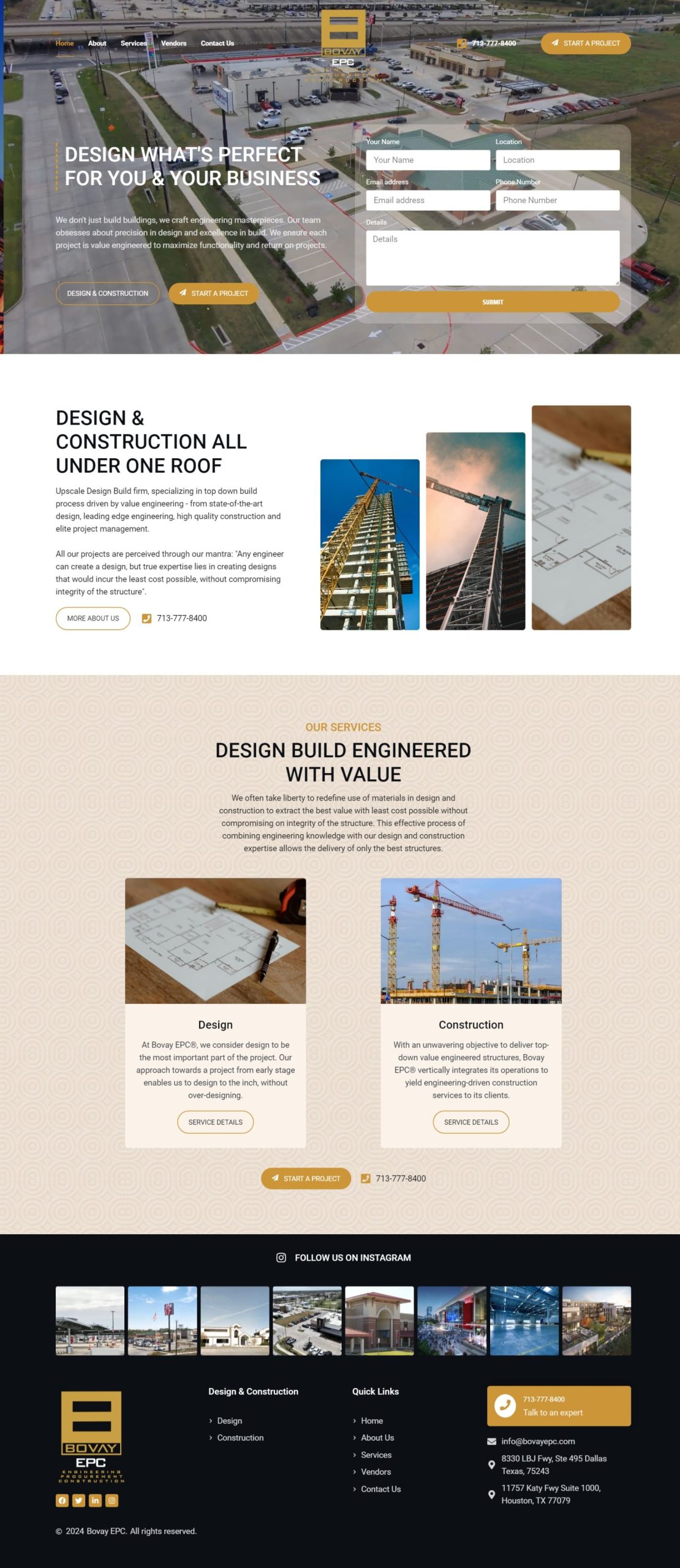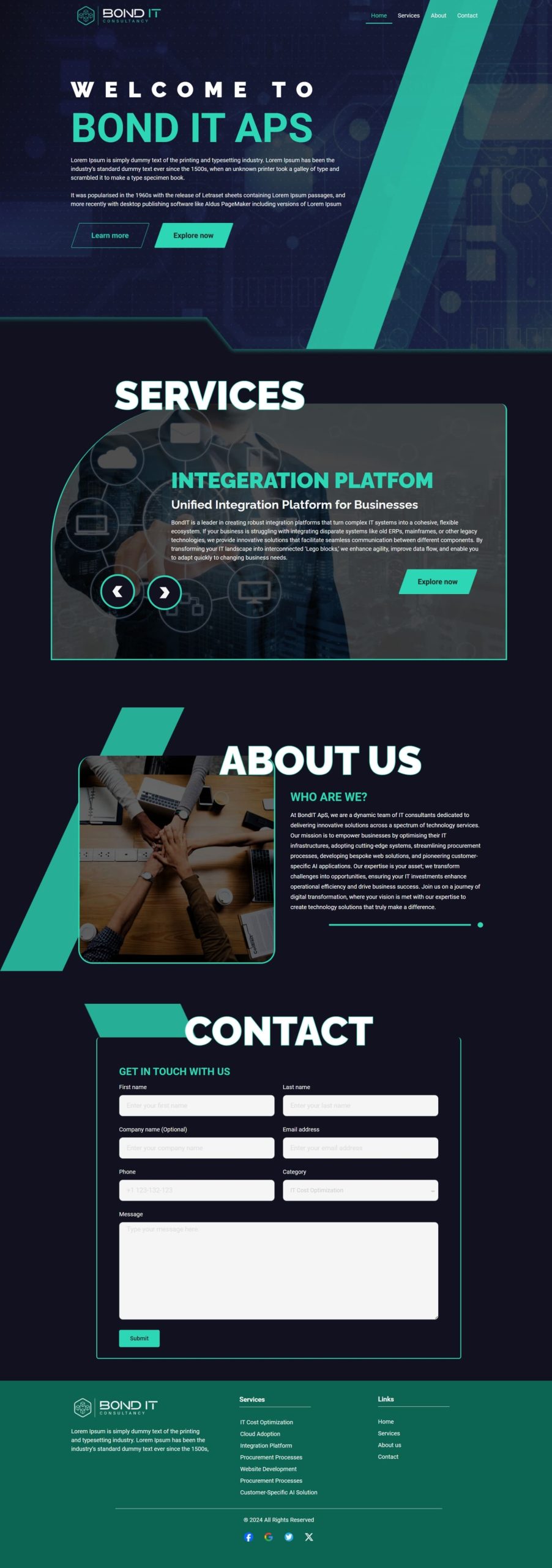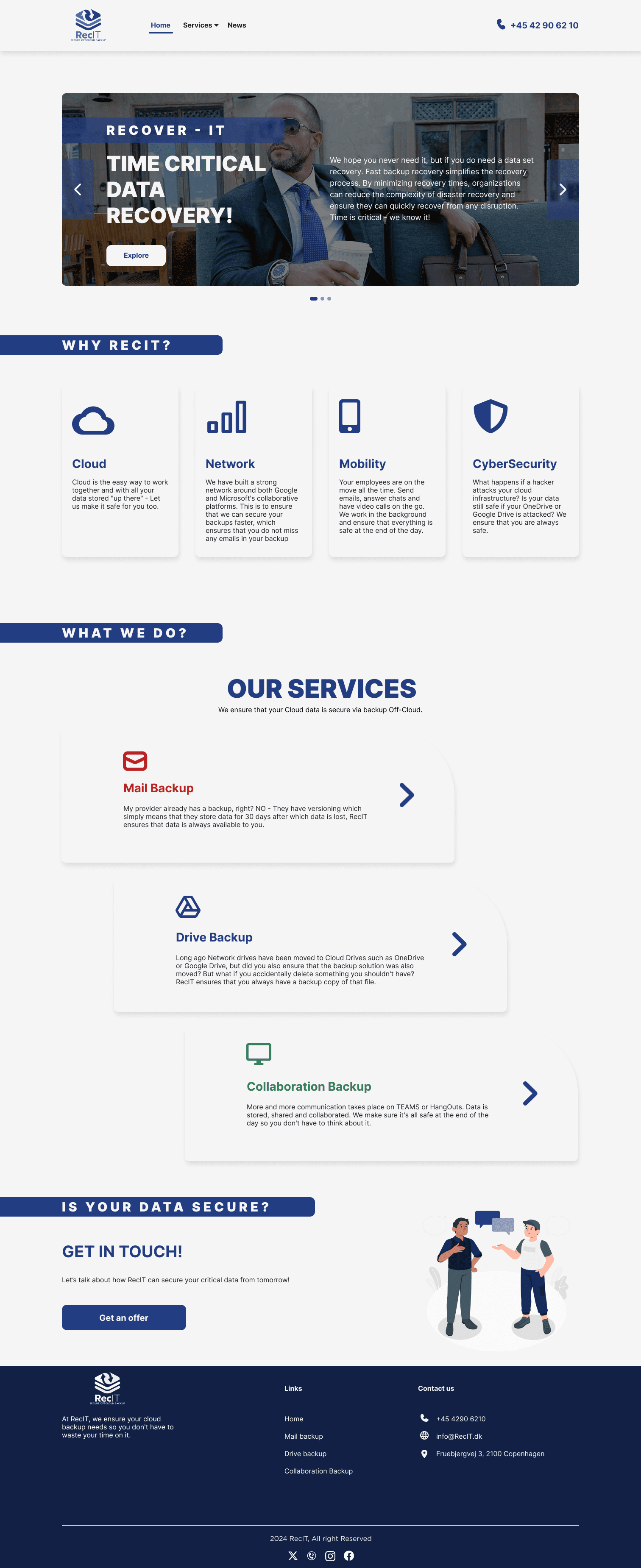Website Design Services
Our Website Design Services deliver captivating, responsive websites that blend aesthetics with functionality. We craft user-centric designs that reflect your brand’s identity, ensuring seamless navigation and optimal performance on all devices. Whether you need a new site or a redesign, we create digital experiences that engage visitors and drive results.

Explore Our Diverse Website Design Options
Custom Website Design
Our Custom Website Design service creates unique, brand-focused websites that stand out. We tailor every element to your business needs, ensuring a visually appealing, user-friendly experience that captures your brand's essence and drives engagement.
Responsive Development
We start by understanding your business goals, target audience, and user behaviors. Through comprehensive research and discovery sessions, we gather valuable insights that guide our design process.
E-Commerce Solutions
Our Responsive Development service ensures your website adapts effortlessly to any device. We create flexible, user-friendly designs that provide a consistent, high-quality experience, whether on a desktop, tablet, or smartphone.
SEO Optimization
Our SEO Optimization service enhances your website’s visibility by targeting relevant keywords, improving on-page elements, and boosting technical performance. We build quality backlinks to increase authority and drive organic traffic.
Content Management Systems
Our Content Management Systems (CMS) simplify website management with intuitive editing tools. Easily update, organize, and publish content, ensuring your site remains current and engaging without technical hassle.
Website Maintenance
Our Website Maintenance service keeps your site updated, secure, and running smoothly. We handle technical issues, perform regular updates, and ensure optimal performance for a seamless user experience.
Customer-Centric Website Design
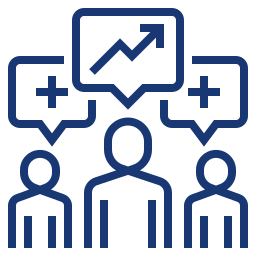
User Research
Conduct thorough research to understand the target audience, including their needs, behaviors, and preferences.
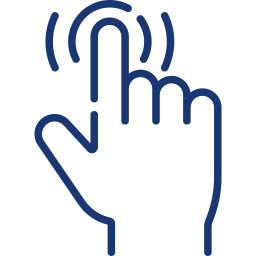
Intuitive Navigation
Design the website with a focus on ease of use, ensuring that navigation is intuitive and user-friendly.
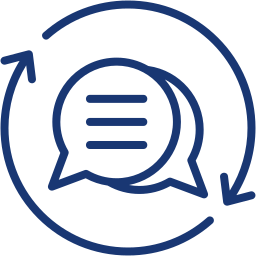
Personalized Experience
Incorporate features that allow for personalization, such as customizable content, recommendations.
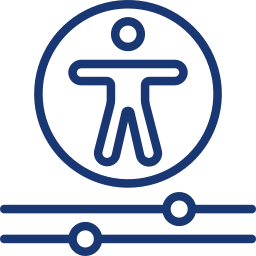
Continuous Feedback and Improvement
Implement mechanisms for gathering user feedback, such as surveys and usability testing.


Insight Gathering & Analysis
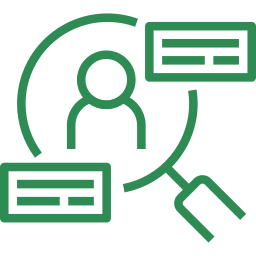
Data Collection
Gather qualitative and quantitative data from various sources, such as user surveys, interviews, analytics.
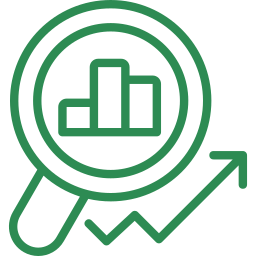
Trend Identification
Analyze the collected data to identify patterns, trends, and emerging issues. Recognize recurring themes.
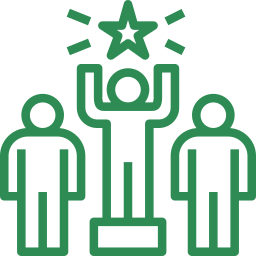
Insight Synthesis
Integrate findings from different data sources to generate actionable insights.
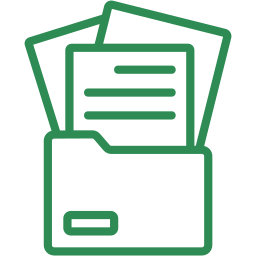
Strategic Recommendations
Translate insights into strategic recommendations for design and development.
Interface Layout & Prototyping
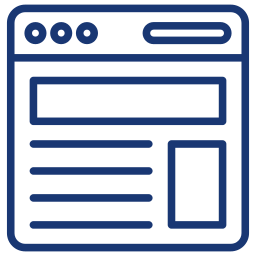
Structural Design
Develop a clear and organized layout that outlines the placement of key elements such as navigation.
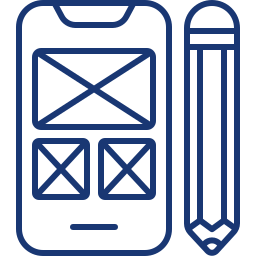
Interactive Prototypes
Create interactive prototypes that simulate the user interface and functionality of the final product.
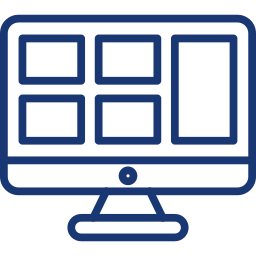
User Testing and Feedback
Conduct user testing with prototypes to identify usability issues and gather feedback on the layout.
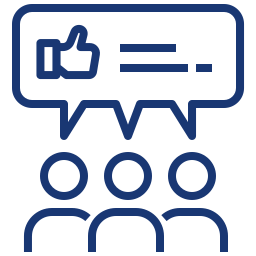
Iterative Refinement
Continuously refine the interface layout based on testing results and stakeholder input.


Innovative Design
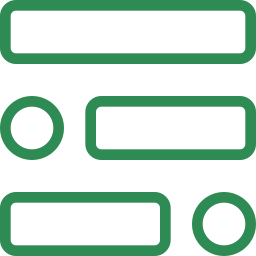
Problem Solving
Employ novel solutions to address design challenges, pushing the boundaries of conventional thinking.
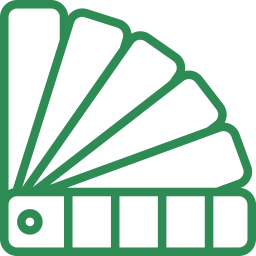
Trend Integration
Incorporate current design trends and emerging technologies to ensure the design remains.
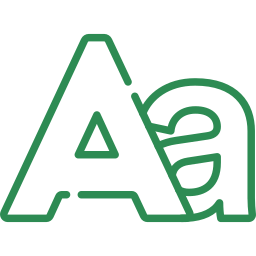
User-Centric Innovations
Prioritize user needs and preferences in the design process. Use insights from user research to develop features.

Experimentation and Iteration
Embrace a culture of experimentation by prototyping and testing various ideas.
Execution & Guidance
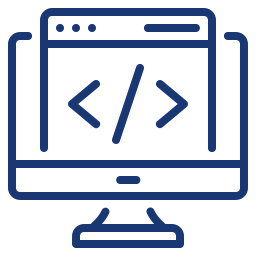
Strategic Implementation
Execute the project plan by adhering to predefined strategies and objectives.
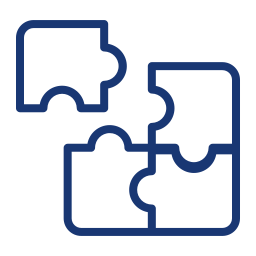
Ongoing Direction
Provide continuous guidance and support throughout the project lifecycle. This involves directing team efforts.
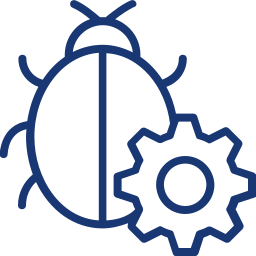
Quality Assurance
Monitor the quality of work during execution to ensure it meets established standards.
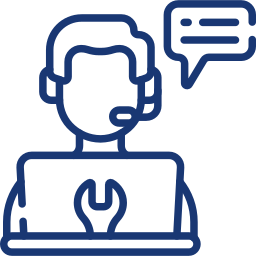
Stakeholder Communication
Maintain clear and consistent communication with stakeholders. Provide updates on progress.


User Interaction Review
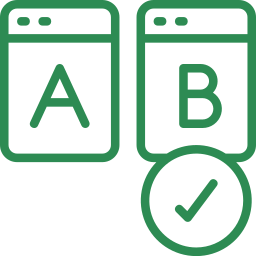
Assess Usability
Evaluate how easily users can navigate and interact with the website, identifying any obstacles.

Analyze User Feedback
Gather and review user feedback to understand their pain points, preferences, and overall satisfaction.
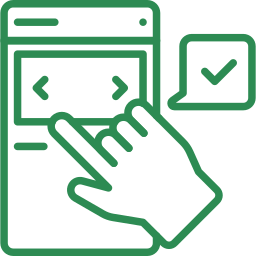
Test Interaction Flows
Examine key user flows and interactions, such as form submissions or product searches.
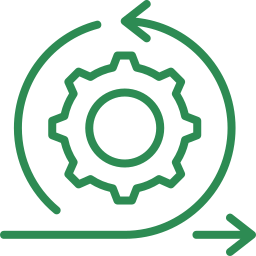
Observe User Behavior in Real-Time
Conduct live user testing sessions to observe how users interact with the website.
User-Empathy Design
User-Empathy Design is an approach that prioritizes understanding and addressing the emotional and practical needs of users throughout the design process. By deeply empathizing with users, designers create solutions that resonate on a personal level, ensuring the final product is intuitive, accessible, and engaging. This involves conducting thorough user research, gathering feedback, and iterating based on real-world interactions. The goal is to design experiences that are not only functional but also meaningful, enhancing overall user satisfaction and fostering a strong connection with the product.


Custom-Tailored Industry Interfaces
Custom-Tailored Industry Interfaces are specialized design solutions crafted to meet the unique needs and workflows of specific industries. These interfaces are developed with a deep understanding of industry-specific requirements, integrating features and functionalities that address particular challenges and optimize user interactions. By customizing elements such as terminology, processes, and visual layouts, these interfaces enhance efficiency, productivity, and user satisfaction within the professional context. Whether for healthcare, finance, or manufacturing, Custom-Tailored Industry Interfaces ensure a seamless and intuitive user experience that aligns with industry standards and practices.
Basic Package
-
Initial consultation (1 hour)
-
Wireframe designs for up to 3 pages
-
2 rounds of revisions
-
Final deliverables in standard formats
-
Design Guidelines Document
-
Feedback Integration
Standard Package
-
Initial consultation (2 hour)
-
Wireframe designs for up to 5 pages
-
High-fidelity UI design
-
User flow and journey mapping
-
3 rounds of revisions
-
Deliverables in multiple formats
Premium Package
-
Initial consultation (3 hour)
-
Wireframe designs for up to 10 pages
-
High-fidelity UI design
-
Persona development
-
Usability testing and iteration
-
5 rounds of revisions
FAQs
What is UI/UX design?
UI (User Interface) design focuses on the visual aspects of a digital product, including layout, color schemes, typography, and interactive elements. UX (User Experience) design is about creating a seamless and intuitive experience for users, ensuring that they can easily navigate and interact with the product.
Why is UI/UX design important for my business?
What is the typical process for a UI/UX design project at ServeTech Global?
Our process includes the following steps:
1. Research & Discovery: Understanding your business goals, target audience, and user behaviors.
2. User-Centered Design: Creating designs that prioritize usability and accessibility.
3. Wireframing & Prototyping: Visualizing the layout and functionality before finalizing the design.
4. Visual Design: Bringing the wireframes to life with a cohesive and appealing design.
5. Usability Testing: Gathering feedback and making adjustments to ensure optimal user experience.
6. Implementation & Support: Collaborating with your development team and providing ongoing support.

